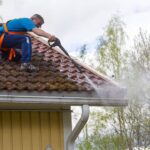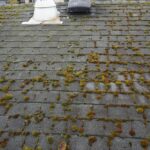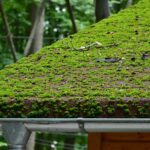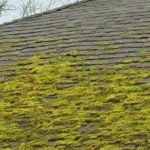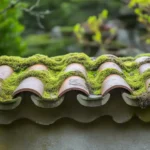Are you looking to enhance the longevity of your roof while ensuring effective water management? Learning how to install roof edge drip can be a game-changer for homeowners eager to protect their investment from water damage. This guide will walk you through the steps of installing a roof edge drip, a crucial component for maintaining the health and efficiency of your home’s roofing system.

Understanding the Importance of a Roof Edge Drip
A roof edge drip is designed to direct water away from the fascia and underlying roofing components. It plays a significant role in preventing water from seeping into unwanted places, thereby shielding your home from potential water damage. By mastering how to install roof edge drip, you ensure that rainwater is channeled properly, reducing the risk of moisture-related issues.
Tools and Materials Needed
Before diving into the installation process, it’s important to gather all necessary tools and materials. Here’s what you’ll need:
- Roofing ladder
- Measuring tape
- Roofing nails
- Hammer
- Metal snips
- Chalk line
- Drip edge flashing
Ensure your ladder is secure and your tools are within easy reach to make the process smooth and safe. For selecting the most suitable roofing ladder, check this guide on best ladder choices.
Step-by-Step Installation Guide
Step 1: Prepare the Roof Edge
Begin by examining the roof edge. Remove any debris or old materials to ensure a clean and smooth surface. A thorough inspection is vital to avert complications during installation. Learn more about roof inspections at roof inspection essentials.
Step 2: Measure and Cut the Drip Edge
Measure the length of your roof edge using the measuring tape. Mark the lengths on the drip edge flashing and cut it with metal snips. Precision is key to ensure the drip edge fits seamlessly.
Step 3: Position the Drip Edge
Once you’ve cut the drip edge to the appropriate length, position it along the roof edge. Use the chalk line for alignment, ensuring a straight line. The drip edge should extend slightly beyond the roof decking.
Step 4: Secure the Drip Edge
Begin by nailing the drip edge in place. Use roofing nails and a hammer, spacing the nails approximately every 12 inches. Ensure the nails are flush with the drip edge to prevent warping or lifting, which can lead to water infiltration.
Why Regular Maintenance Matters
Like any other part of your roof, maintaining the drip edge is crucial to its longevity and functionality. Proper maintenance can prevent minor issues from escalating into costly repairs. For more tips, refer to this external resource on roof maintenance.
Also, learn how to manage roof issues such as minor roof sagging by visiting roof sagging fixes.
How Does a Roof Edge Drip Protect Your Home?
A roof edge drip effectively directs water away from the roof and siding, minimizing the risk of water pooling and damage. It protects the eaves and fascia, maintaining the aesthetic appeal and structural integrity of the roof. Efficient installation and maintenance of roof edge drip can substantially enhance the lifespan of your roof.

Frequently Asked Questions
Can I Install a Roof Edge Drip Myself?
Yes, with the right tools, safety precautions, and guidance, you can install a roof edge drip yourself. However, if unsure, hiring professionals is a safer option.
What Is the Best Time to Install a Roof Edge Drip?
The ideal time is during roof replacement or new roof installation. However, it can be added anytime as part of routine maintenance.
How Important Is a Roof Edge Drip?
A roof edge drip is essential for water management and preventing water damage to your home. It protects against costly repairs and extends the roof’s lifespan.
This article contains affiliate links. We may earn a commission at no extra cost to you.




